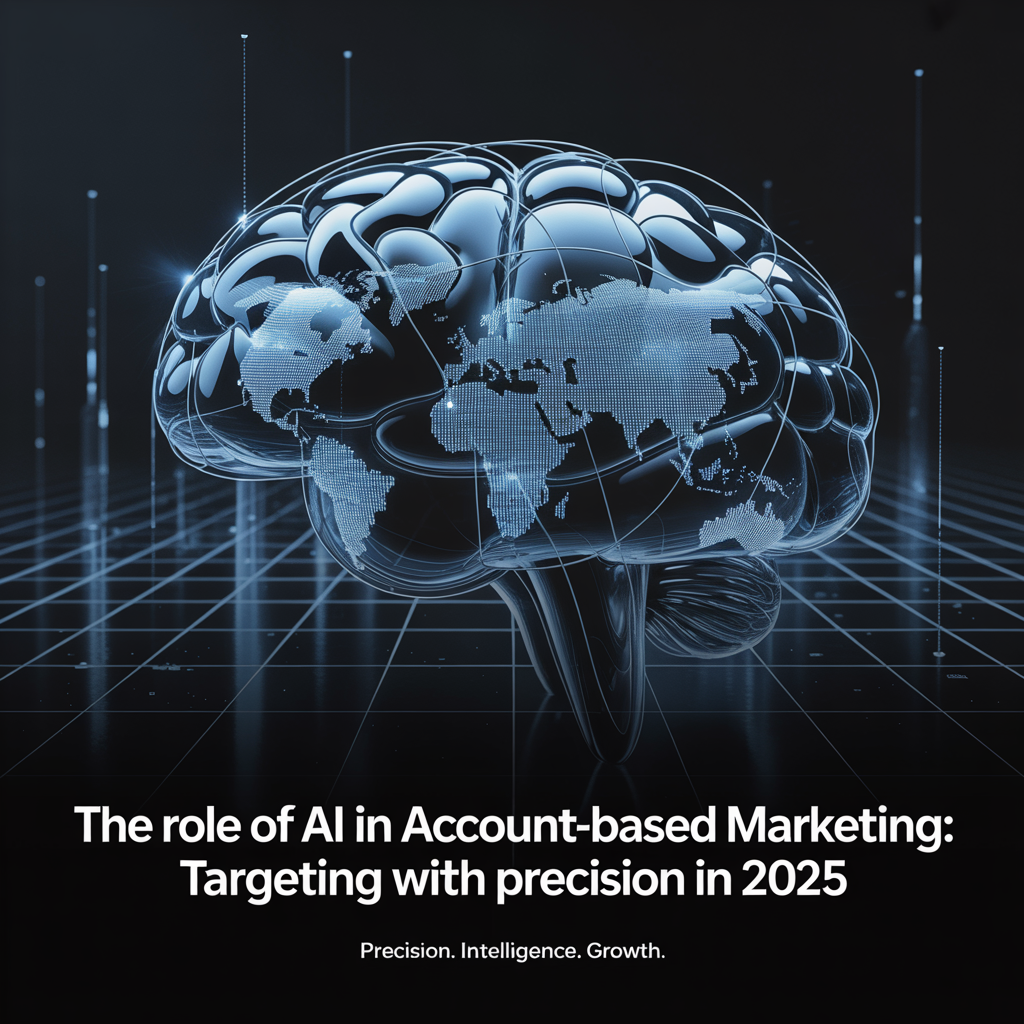The Role of AI in Account-Based Marketing: Targeting with Precision in 2025

Introduction
Account-Based Marketing (ABM) has always been about focus — identifying the right accounts, engaging them with personalized outreach, and building relationships that drive high-value conversions. But in 2025, the game has changed. Artificial Intelligence (AI) has become the ultimate precision tool, helping B2B marketers predict, prioritize, and personalize like never before.
This blog explores how AI is transforming ABM strategies, why it’s now a competitive necessity, and the tools and tactics that will shape the future of hyper-targeted B2B marketing.
What is AI in Account-Based Marketing and Why It Matters
At its core, AI in ABM is the use of machine learning, predictive analytics, and automation to make data-driven decisions about which accounts to target, when to reach out, and how to engage them.
Why it matters in 2025:
- B2B buying committees are larger and more complex than ever.
- Data is abundant but scattered — AI helps unify and interpret it.
- Buyers expect personalization at scale, which AI makes possible.
📊 Stat: According to Demandbase, 80% of B2B marketers using AI in ABM report higher engagement rates compared to traditional approaches.
Challenges in ABM Without AI
Before AI, ABM execution faced serious bottlenecks:
- Manual account research was time-consuming and prone to human bias.
- Static targeting lists missed fast-moving opportunities.
- Content personalization was difficult to scale across multiple accounts.
- Lack of real-time intent insights led to missed engagement windows.
These challenges meant marketers often spent months targeting accounts that were never truly ready to buy.
Proven Strategies to Leverage AI in ABM
1. AI-Powered Account Selection and Prioritization
AI platforms analyze firmographic, technographic, and behavioral data to identify high-propensity accounts.
Tools: 6sense, Demandbase, Madison Logic
2. Predictive Analytics for Buying Intent Signals
AI algorithms spot buying signals — such as research patterns, content engagement, and competitor site visits — before sales teams notice them.
3. Personalized Content Creation at Scale
Generative AI tools can craft account-specific content in minutes, from LinkedIn ads to personalized email sequences.
Example: Using ChatGPT with CRM data to tailor outreach messaging for a CFO in the SaaS industry.
4. Real-Time ABM Orchestration
AI doesn’t just suggest — it acts. Modern ABM platforms now automatically adjust campaigns based on account engagement in real time.
Trends and the Future of AI in ABM (2025 & Beyond)
- Hyper-Predictive Targeting: AI models will predict exactly when each buying group is most likely to convert.
- Multimodal AI: Voice, image, and text analysis will enrich buyer profiles.
- Integrated AI-Sales Workflows: Sales and marketing teams will have AI-assisted playbooks for every stage of the buyer journey.
- Zero-Data Wastage: AI will ensure all captured data is actionable.
Pro Tips & Bonus Insights
- Use intent data from tools like Bombora to align marketing and sales.
- Combine first-party CRM data with third-party insights for deeper personalization.
- Always train AI models on your industry-specific data for higher accuracy.
Conclusion
In 2025, AI is no longer a “nice-to-have” in ABM — it’s the central engine driving account selection, engagement, and conversion. B2B brands that adopt AI-powered ABM will see not just better targeting, but faster deal cycles and higher ROI.
💡 Ready to elevate your ABM strategy? Connect with us today and let’s create a precision-driven ABM plan tailored to your business.
- Art
- Causes
- Crafts
- Dance
- Drinks
- Film
- Fitness
- Food
- الألعاب
- Gardening
- Health
- الرئيسية
- Literature
- Music
- Networking
- أخرى
- Party
- Religion
- Shopping
- Sports
- Theater
- Wellness


